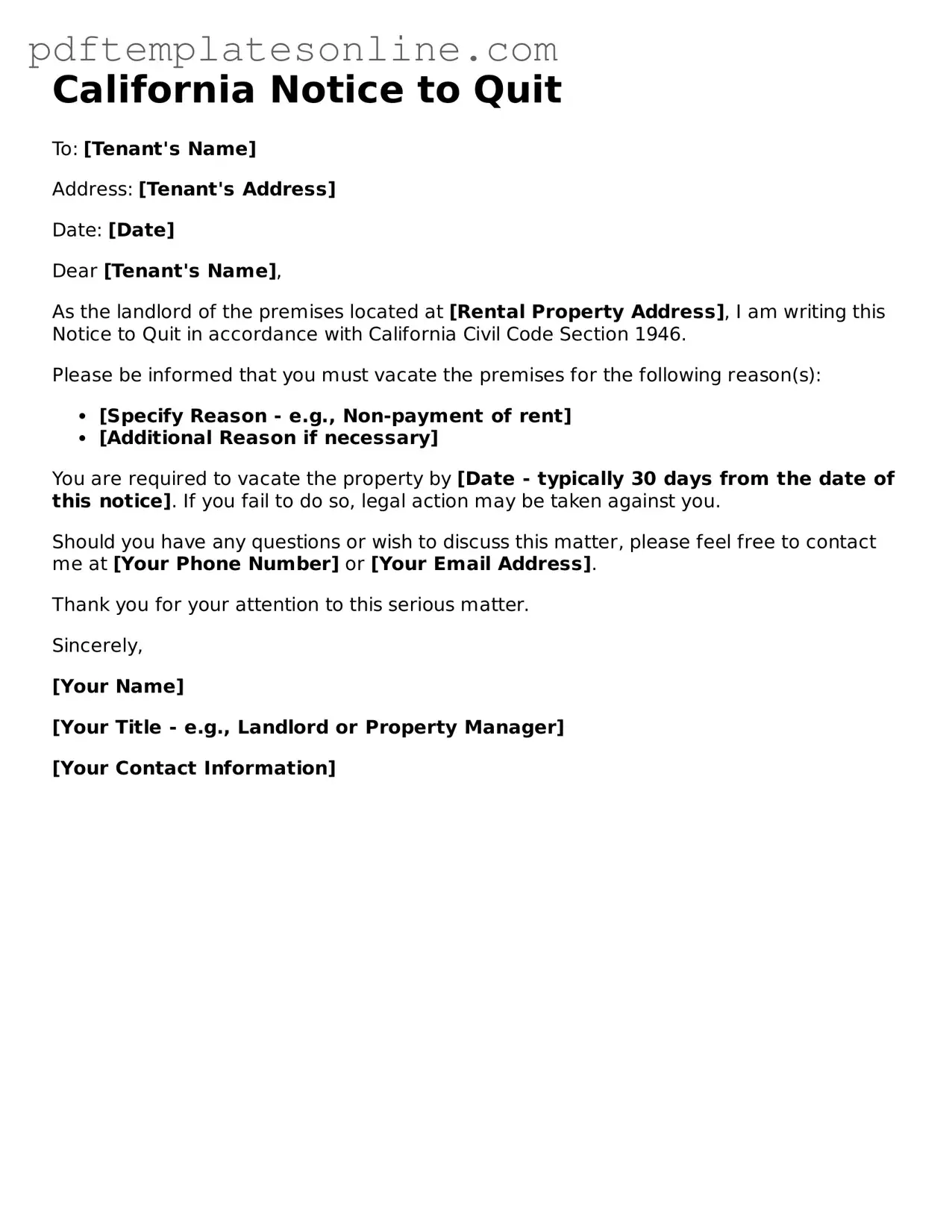Filling out the California Notice to Quit form can be straightforward, but mistakes can lead to delays or complications. One common error is not providing the correct address of the rental property. It is essential to include the full address, including unit numbers if applicable, to ensure that the notice is valid and can be properly served.
Another frequent mistake involves failing to specify the reason for the eviction. The form requires clear and concise reasons, such as non-payment of rent or lease violations. Omitting this information can render the notice ineffective, as it may not provide the tenant with a clear understanding of the situation.
Many individuals overlook the importance of signing and dating the form. A Notice to Quit must be signed by the landlord or their authorized agent. Without a signature, the notice may be considered incomplete and unenforceable. Additionally, dating the form is crucial to establish a timeline for the eviction process.
Some people also neglect to deliver the notice properly. California law outlines specific methods for serving the Notice to Quit, including personal delivery or posting it on the property. Failing to follow these methods can lead to disputes about whether the tenant received the notice.
Another mistake is using outdated or incorrect forms. It is vital to ensure that the most current version of the Notice to Quit form is being used, as laws and requirements can change. Using an outdated form may lead to compliance issues and could potentially invalidate the notice.
Lastly, individuals sometimes miscalculate the notice period required. Depending on the reason for the eviction, the notice period can vary. For instance, a 3-day notice may be appropriate for non-payment of rent, while a 30-day notice might be necessary for other lease violations. Understanding the correct timeframe is essential to avoid unnecessary complications in the eviction process.
